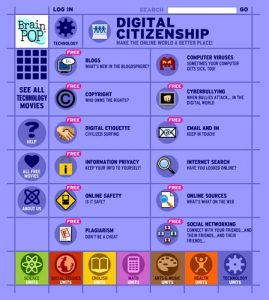We are all stunned by the current state of affairs, this pandemic which has us feeling completely confined to our home and for some place of work. For those of us that have started back to work, it feels surreal as our school environments have completely shifted. The focus on how we can best meet the needs of our students without meeting face-to-face in our schools has many of us challenged with how we are going to adjust in these challenging times.
As we explore how we are shifting our thinking to more online student services we have explored lots of options at our weekly meetings with our districts. Looking at video-conferencing tools as well as many online applications and sites that are now offering free subscriptions for the duration of the school year. We look to share options to support this transition to online learning and navigate the difficulties of social distancing within our own families and our school communities.
I have been posting several options on my Facebook feed but thought I would post them here as well as additional resources for people to draw from.
We are currently trying to shift the focus to identifying what the needs are for our students as well as the needs of our staff. We have been working on district surveys, which we hope will give our district a better sense of what the overall needs are, especially when looking at how many of our families have access to technology (computer, Ipad and wifi).We need to get creative during these challenging and uncertain times as there is no “one size fits all” model that will work when looking at providing our students with continued instruction.
I hope you find some of these resources helpful.
Cheers!
| Websites to look into: | Brief Description: |
| https://www.tinytap.it/ | Educational games to support math, vocabulary, social skills, nature etc. |
| www.earthrangers.com | Focuses on conservation and environmental knowledge. They provide programming for children to participate in at home, at school and in their communities. |
| https://www.pblworks.org/what-is-pbl | Looks at what Project-Based Learning can look like for students. |
| www.openculture.com
|
Free culture and educational media available to students K-12. Online courses, videos, audio books, language lessons etc. |
| https://www.commonsense.org/education/top-picks/10-great-free-websites-for-elementary-school
(https://www.commonsense.org/education/top-picks/tech-tools-for-learning-at-home |
10 noteworthy and credible sites to support Elementary students
This site also offers lots of options to support at home learning and some ideas for essential tech tools.
|
| www.zoom.us | Used to facilitate online meetings, videos, webinars for multiple groups of people. |
| www.weareteachers.com
|
This site provides a list of children’s authors doing online read alouds and activities. |
| www.codingwizardshq.com | This site provides free classes on coding for students. |
| www.steampoweredfamily.com | Focus activities on STEM and STEAM (Science, Technology, Engineering, Arts and Math). |
| www.mymodernmet.com
|
This site allows you to watch livestreams from Aquariums. |
| www.farmfood360.ca | Virtual tools and resources to teach children about agriculture and food in Canada. |
| www.TumbleBookLibrary.com | Site allows you access a wide variety of books online. Similar features to Reading A-Z, however wide variety of popular titles of children’s books. (Username: tumble735 Pw: books) |
| www.adventuresinfamilyhood.com | Virtual tours and field trips to access online |
| www.weareteachers.com | Lots of great ideas for card games to support math skills. |

Recent Comments